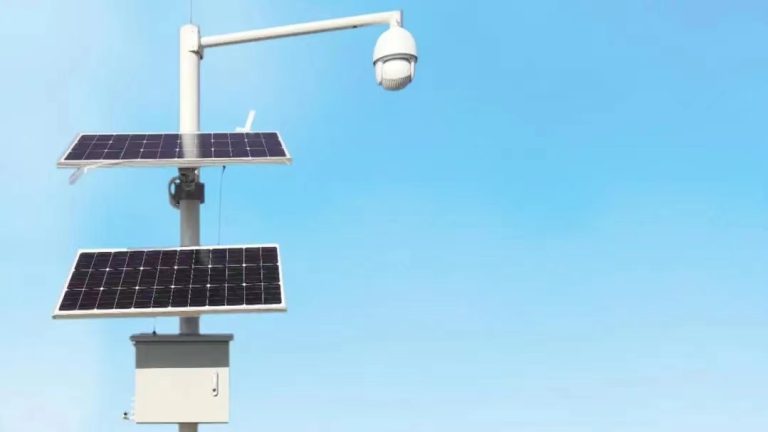How Regular Firmware Maintenance Impacts Stability, Compatibility, and Field Reliability
🔧 Introduction: Firmware – The “Invisible Engine” of Your Inverter
In the solar + storage world, hardware specs get all the attention — wattage, efficiency, battery compatibility — but often overlooked is the firmware: the software running inside your inverter.
A good hybrid inverter with poor or outdated firmware can result in:
- Unstable performance
- Poor battery communication
- Energy export errors
- System crashes or reboots
- EPS/backup failures
In this article, we’ll explore why firmware matters, how it affects real-world performance, and what installers and distributors should do to manage firmware updates across projects — especially in export and remote markets.
🔍 What Is Firmware in Inverters?
Firmware is the embedded control software programmed into the microcontrollers (MCUs) and DSP chips inside the inverter.
It controls:
- MPPT tracking and PV curve scanning
- Battery charging logic (SOC, C-rate, BMS protocols)
- EPS or off-grid mode behavior
- Communication with cloud platform and apps
- Grid export rules (e.g. zero-export, time-of-use)
Unlike a phone app, firmware can’t be casually updated by the user — it must be carefully tested, uploaded using special tools or cloud OTA (Over-The-Air), and verified for system stability.
⚠️ Common Issues from Outdated Firmware
Here are typical field complaints caused by poor firmware:
| ❌ Problem | Root Cause |
|---|---|
| Battery not recognized | BMS protocol missing or outdated |
| EPS output trips | Switchover logic bug |
| PV generation stuck at 0W | MPPT algorithm crash |
| Wrong SOC readings | CAN/RS485 sync mismatch |
| System offline in app | Communication stack failure |
| Country code not accepted | Grid standards not fully supported in old firmware |
💡 Many “hardware defects” are actually firmware logic bugs — especially in mid-market brands.
🔄 Why Regular Firmware Updates Matter
| 🔎 Feature | Benefit |
|---|---|
| 🛠️ Bug Fixes | Solves known stability, safety, or compatibility issues |
| 🔌 New Battery Support | Adds more BMS protocol libraries for newer LFP brands |
| ⚡ Grid Code Compliance | Aligns with updated standards (e.g., G99, AS/NZS 4777) |
| 📊 Improved Performance | Better MPPT tracking, lower standby loss |
| 🔋 Enhanced Features | Time-of-use charging, virtual battery, power limit modes |
| 🌐 Better Monitoring | More detailed data logging and cloud sync improvements |
Especially for export customers, firmware updates ensure compatibility with local grid specs and batteries, even if they weren’t available when the inverter was first shipped.
🧰 How to Manage Firmware Updates in the Field
✅ 1. Ask Suppliers for Firmware Logs
A reliable inverter supplier should provide:
- Latest firmware version list (e.g., v2.17.03 for model X)
- Release notes (what changed and why)
- Update tool or cloud update guide
- Compatible battery firmware versions
✅ 2. Plan for Remote OTA Where Possible
Many inverters now support OTA (Over-the-Air) updates via:
- Wi-Fi or 4G stick
- Installer web portal
- App-based trigger with admin access
This is ideal for international installs where physical access is hard.
✅ 3. Keep Commissioning Records
Maintain a record of:
- Firmware version installed
- Date of last update
- Whether remote update was successful
- Any known bugs (check community forums if vendor is less responsive)
✅ 4. Train Local Installers
For export markets, train partners to update firmware locally using:
- USB or RS232 connection kits
- Config software like SolarAssistant, iSolarCloud Toolkit, etc.
- Firmware files sent by supplier
This prevents long shipping delays if a unit needs reconfiguration.
🏭 Installer Perspective: How It Affects You
| Impact Area | Firmware-Related Risk |
|---|---|
| Support Calls | More issues from outdated firmware → more support load |
| Commissioning Time | Unstable versions add hours or days to setup |
| Customer Trust | Unexpected reboots or SOC issues erode confidence |
| Brand Loyalty | Installer may abandon a brand after too many bugs |
💬 “One firmware bug can cost you 5 hours of debugging and 1 lost customer.”
📦 OEM / Distributor Tips
If you’re a distributor or OEM exporting hybrid inverters, consider:
- Requesting pre-updated stock before shipment
- Keeping firmware files and update tools archived per model
- Including firmware version in packing list / manual
- Alerting clients if new firmware is critical for safety or compatibility
- Offering remote update support via WhatsApp / WeChat / VPN login
✅ Firmware Is a Strategic Asset, Not a Footnote
As PV+ESS systems grow in complexity, firmware becomes the core enabler of performance, not just a background process.
Choosing a hybrid inverter supplier with:
- A consistent firmware update policy
- Transparent changelogs
- Easy OTA support
- Responsive tech support
…will dramatically reduce your long-term O&M costs and customer friction.
🚀 “In solar, hardware gets you to market. Firmware keeps you there.”









